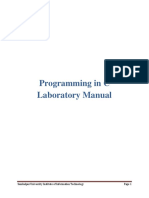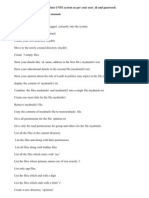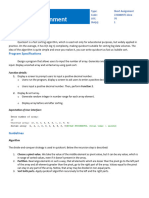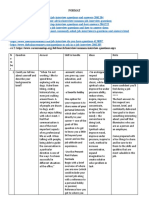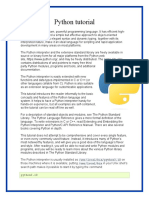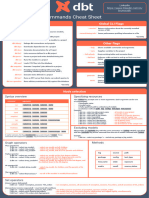0% found this document useful (0 votes)
153 views2 pagesLab 3-Linux Basic Commands Combination
This document outlines 4 exercises for a Linux command line lab:
1. Navigating directories and creating/copying files and folders in a nested structure.
2. Explaining the purpose of common Linux commands like dpkg, free, ifconfig, sudo, and running them.
3. Practicing basic directory navigation and file listing/sorting commands.
4. Creating a text file of usernames, displaying and sorting the contents, counting the number of users. Screenshots of command outputs must be captured and included.
Uploaded by
Thanh Huyền CaoCopyright
© © All Rights Reserved
We take content rights seriously. If you suspect this is your content, claim it here.
Available Formats
Download as PDF, TXT or read online on Scribd
0% found this document useful (0 votes)
153 views2 pagesLab 3-Linux Basic Commands Combination
This document outlines 4 exercises for a Linux command line lab:
1. Navigating directories and creating/copying files and folders in a nested structure.
2. Explaining the purpose of common Linux commands like dpkg, free, ifconfig, sudo, and running them.
3. Practicing basic directory navigation and file listing/sorting commands.
4. Creating a text file of usernames, displaying and sorting the contents, counting the number of users. Screenshots of command outputs must be captured and included.
Uploaded by
Thanh Huyền CaoCopyright
© © All Rights Reserved
We take content rights seriously. If you suspect this is your content, claim it here.
Available Formats
Download as PDF, TXT or read online on Scribd
/ 2



















































